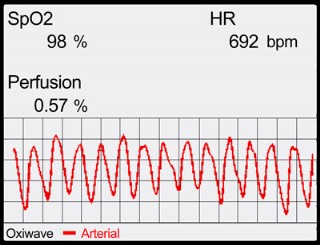
Stable anesthesia was induced at all doses of TBE and the time for which anesthesia permissible for surgical treatment was maintained was found to be dose dependent. The anesthesia time and recovery time after the induction of TBE anesthesia in Korl:ICR, A:ICR, and B:ICR mice are shown in Figure 1. All animal experiments were performed in accordance with the Guidelines for Animal Care and Use by Kyungpook National University. The mice were housed in the Kyungpook National University-Laboratory Animal Resources Center. After an initial acclimation period (14 days), changes in general condition, mobility, appearance, reflexes, and deaths were monitored in all experimental animals animals that displayed abnormal responses were excluded from the experiment. During the experiment, the mice were maintained in a specific pathogen-free environment under strict environmental conditions: light cycle (lights on, 07:00 lights off, 19:00) 22℃☒℃ and 50%☑0% relative humidity. All mice were given ad libitum access to a standard irradiated chow diet (Purina, Seoul, Korea) and filtered tap water. Korl:ICR mice were kindly provided by the Department of Laboratory Animal Resources in the National Institute of Food and Drug Safety Evaluation (NIFDS, Cheongju, Korea), and the other ICR mice were purchased from two different vendors located in the United States (A:ICR) and Japan (B:ICR). Six-week-old male and female ICR mice were obtained from three difference sources. The present study was conducted to compare the anesthetic effects of the TBE in three strains of ICR mice (Korl:ICR, A:ICR, and B:ICR). However, no study has compared the anesthetic effects of TBE in ICR mice obtained from different sources. In addition, repeated TBE injection is reported to lead to high mortality, and there are differences in the anesthetic effects in some strains of inbred mice.

However, TBE-induced side effects, such as peritonitis, intestinal ileus, serositis of the abdominal organs, and death, are known to occur in mice. Papaioannou and Fox reported that TBE was an anesthetic agent with low mortality, a morbidity rate less than 1%, and no significant abdominal adhesions or inflammatory responses. TBE induces the suppression of the respiratory and cardiovascular centers of the central nervous system and rapidly induces short term anesthesia with rapid recovery. 2,2,2-Tribromoethanol (tribromoethanol Avertin®) has been used as a general anesthetic for laboratory animals since 1980s. General anesthesia is a pharmacologic state involving amnesia, immobility, unconsciousness, and analgesia and is mainly achieved by injection or inhalation anesthetics. The prevention of pain and distress in experimental animals is essential and can be achieved by the use of anesthetics and analgesics appropriate for biomedical research. Keywords: Anesthesia effect, Korl:ICR mice, pulse oximeter, sex difference, tribromoethanol In conclusion, TBE is a useful drug that can induce similar anesthetic effects in three different strains of ICR mice. These results suggested that ICR mice from different sources exhibited similar overall responses to a single exposure to TBE anesthesia. In addition, body temperature, blood biochemical markers, and histopathological changes of the liver, kidney, and lung were not significantly changed by TBE anesthesia. In the ICR strains tested, there were no significant differences in the mean arterial blood pressure, SPO 2, arterial blood PCO 2, and PO 2, which decreased after TBE anesthesia, or in heart rate and ETCO 2, which increased after TBE anesthesia. The recovery time was significantly longer for female than male mice in the intermediate- and high-dose groups. However, the anesthesia time was longer in female than in male mice, and the duration of anesthesia was significantly longer in female than in male mice in the high-dose group. No significant differences in anesthetic duration were found among the three different strains. Stable anesthesia was induced by all doses of TBE and the anesthesia time was maintained exhibited dose dependency. Anesthesia time, recovery time, end-tidal peak CO 2 (ETCO 2), mean arterial blood pressure, heart rate, oxygen saturation (SpO 2), body temperature, pH, PCO 2, and PO 2 of the arterial blood were measured. TBE (2.5%) was intraperitoneally injected at three doses: high-dose group (500 mg/kg), intermediate-dose group (250 mg/kg), and low-dose group (125 mg/kg). This study was conducted to compare the anesthetic effects of 2,2,2-tribromoethanol (TBE, Avertin®) in ICR mice obtained from three different sources.


 0 kommentar(er)
0 kommentar(er)
